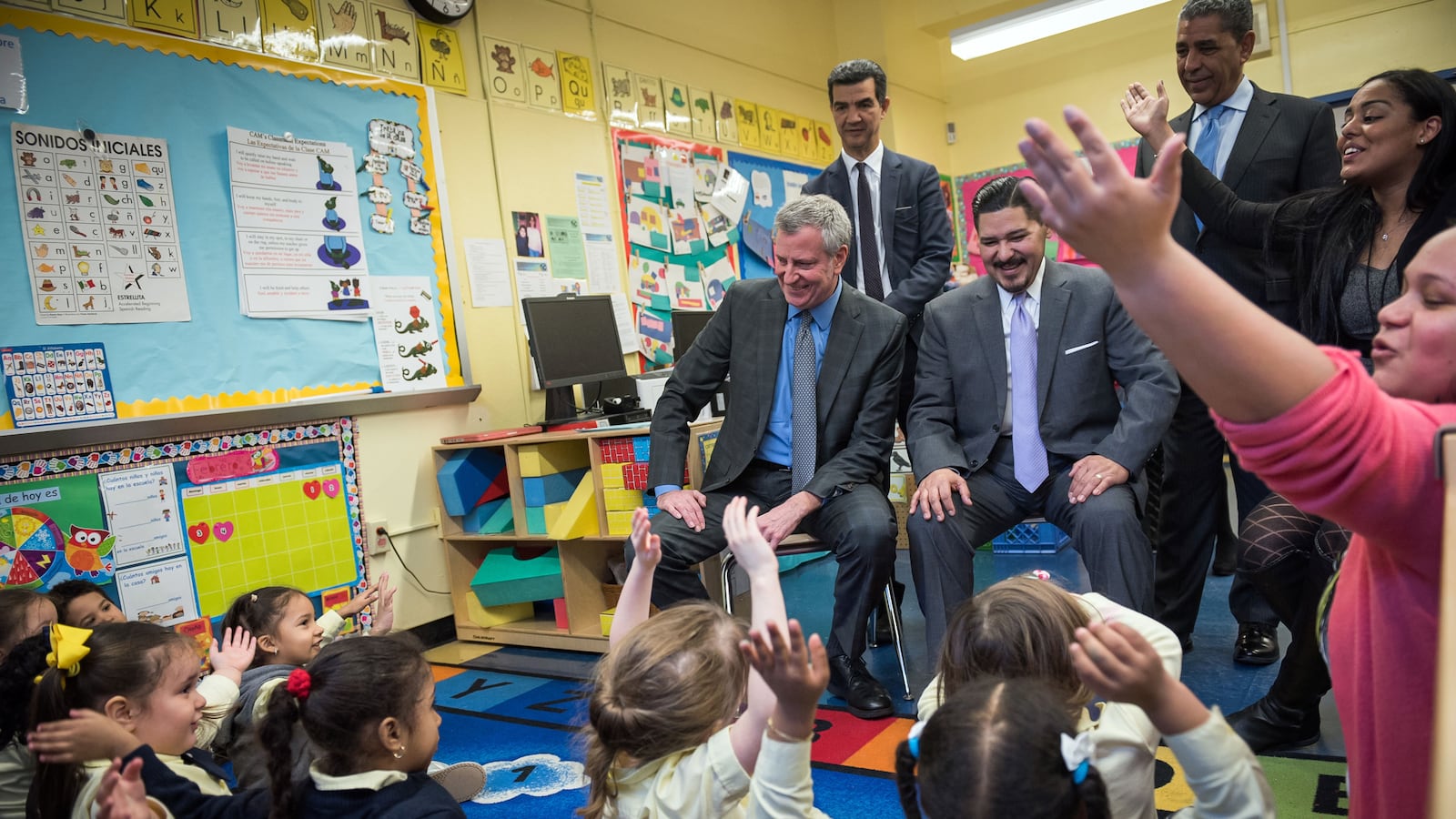Newly added to New York City’s proposed budget for next year: more counselors for homeless students.
Newly cut: extra time in class for students at some of the city’s most struggling schools.
Not in the mix: higher pay for thousands of early childhood educators who are threatening to strike.
Those are some of the education highlights in Mayor Bill de Blasio’s revised budget proposal for the year, which he unveiled at City Hall Thursday. The budget lays out $104 million in new cuts at the city education department while also adding new spending beyond what he proposed in February.
The new budget — which totals $92.5 billion across all city agencies, and $27.1 billion for the education department — is de Blasio’s last pitch before negotiating a final budget with the City Council for fiscal year 2020, which begins July 1.
City agencies were asked to cut a total of $916 million from now through next year in the face of what the mayor described as financial uncertainty, in part from lower income tax receipts. The education department slashed the most — $104 million for school programs, extended learning at Renewal and Rise schools, and central office operations.
At the same time, the mayor wants to continue expanding 3-K seats and spend more on special education initiatives, and after pressure from advocates, restore funding for social workers at schools with high numbers of homeless students.
But he did not use the budget to address one major source of pressure at the moment: the yawning pay gap between pre-K teachers working at traditional city schools and their counterparts at centers run by community groups. Workers at the community-run centers are threatening to walk off the job May 2 to call attention to their low pay, which advocates say could hold back de Blasio’s sweeping early childhood expansion.
De Blasio emphasized that those workers had seen their pay rise during his administration and said that while they are not employed by the city, he hopes to address their concerns outside of the budget process.
“We want to find ways to help them,” he said. “I don’t take it as an article of faith that there’s going be a strike. I think there’s a real dialogue happening and I think we have a good chance of averting the strike.”
Thursday’s proposal retains the mayor’s plan to expand 3-K seats to two more districts. It also adds funding for 53 social workers in schools with a high number of homeless students through the “Bridging the Gap” initiative, which had been shut out of the February budget for the second straight year.
The added positions are welcome but far from enough, said Kim Sweet, executive director of Advocates for Children, in a statement. She said the city needs almost twice as many social workers to address the growing population of homeless students, estimated at about 110,000.
“We are pleased that the mayor has baselined funding for 53 Bridging the Gap social workers at schools with high concentrations of students living in shelters, ending the annual budget dance and helping to ensure the long-term continuity of the program,” Sweet said. “But 53 social workers is woefully insufficient to meet the need.”
De Blasio wants to spend a new $33 million on special education, in part to hire more school psychologists and speech teachers to improve services for students. The money would also go to attorneys involved in the legal process of making sure students are assigned services.
The new spending is notable to Randi Levine, policy director at Advocates for Children. “We did not see this type of investment before,” she said.
As all city agencies looked for ways to trim their budgets, de Blasio said, the education department took special care to preserve two initiatives: the community schools program that adds social services to local schools and the funding model that gives schools with needier students more money.
That meant proposing a $19 million cut to funds that have allowed schools in the Renewal program, which is being phased out, to extend their school days, he said. The city previously said the funding would wind down over the next two years.
“As we looked at the situation we believed the most important investments were the ones that included community schools status and 100% Fair Student Funding for schools,” de Blasio said. “Those will continue, but the extended learning in terms of the impact per dollar, we decided, was something we could reduce.”
Aaron Pallas, a Teachers College professor who has studied the Renewal program, said that while cost-cutting is expected as Renewal phases out, losing learning time might not be worth the savings.
“It’s hard to isolate what the effect of extended learning time has been. But having said that, more opportunities to learn are generally better,” Pallas said. “If this cut means that students in Renewal schools will in fact be spending less time on mastering academic subject matter, that’s not a good thing.”
Alex Zimmerman contributed.

